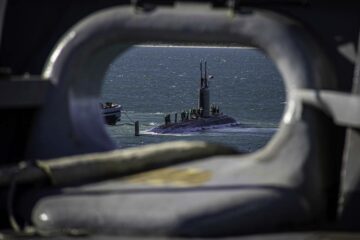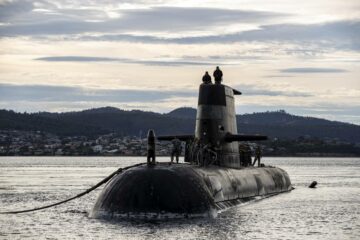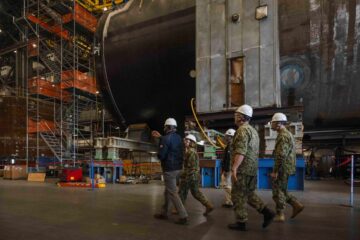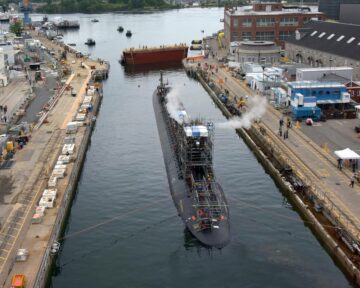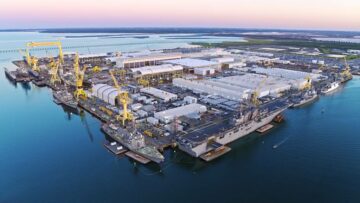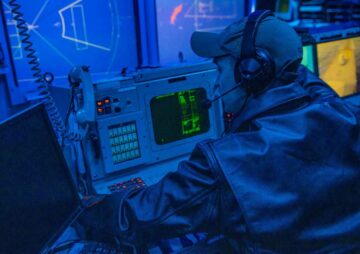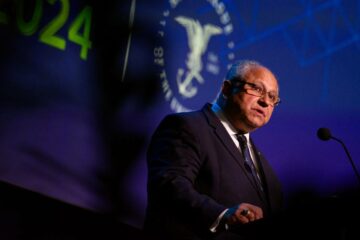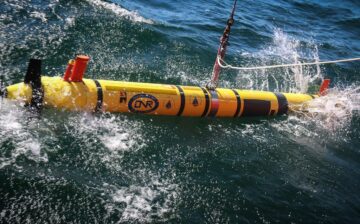WASHINGTON — Northrop Grumman is quietly crafting an electronic-warfare suite designed to fit aboard smaller vessels to shield them from an array of future threats, as the U.S. Navy works to disperse its forces across greater watery expanses and make them harder to spot, target and kill.
The Virginia-based company plans to keep testing its scaled-down prototype electronic-attack package, known as the Ultra-Lite EA System, throughout this year. It was extensively evaluated over the summer aboard an Arleigh Burke-class destroyer at the Rim of the Pacific, the world’s largest maritime military exercise, executives told C4ISRNET, and will likely return to the sea for additional trials by the end of 2023.
“In general, this area of electronic warfare that we’re focused on is around putting electronic-warfare systems onto ships, Navy ships. And those systems help defend the ships against whatever threats that they face,” Mike Meaney, Northrop’s vice president of land and maritime sensors, said in a Jan. 16 interview. “It could be other radars, it could be missile seekers and anti-ship missiles.”
“It’s a very dangerous world today, from a warfighting perspective,” he added, “and our adversaries, our peer adversaries, have very threatening capabilities in the maritime domain.”
Electronic warfare, in general, represents a battle for control of the electromagnetic spectrum, used for communications, weapons guidance and more, which U.S. defense officials say is paramount in a potential fight with China or Russia. Electronic capabilities like the Ultra-Lite can help militaries detect, deceive, disrupt and even destroy one another.
Northrop is leaning into years of experience with the Surface Electronic Warfare Improvement Program, or SEWIP, to realize the smaller, more-quickly installed Ultra-Lite jammer. The company is currently tapped by the Navy for what is known as SEWIP Block 3, which affords a non-kinetic means of swatting down anti-ship missiles, among other abilities.
RELATED
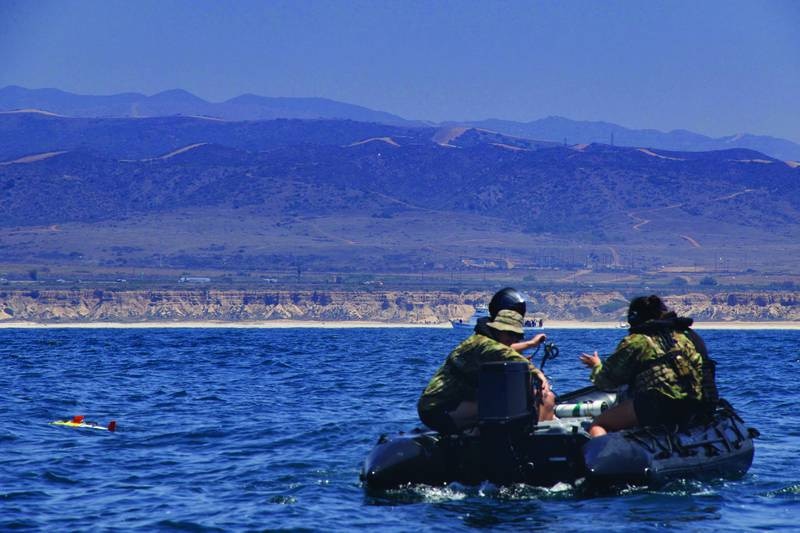
“We wanted to scale up our system for installation on larger ships, such as aircraft carriers and amphibious assault ships, and we also wanted to scale it down for the smaller ship classes. And that’s where Ultra-Lite EA comes into play, into being,” Meaney said. “We think there’s a big opportunity.”
Meaney in 2021 told C4ISRNET that SEWIP can provide an “unlimited supply of bullets” to unleash against perceived dangers.
Northrop is using its own resources — money, time, manpower — to develop the Ultra-Lite EA System in anticipation of a formal ask from the Navy. Lockheed Martin, another defense industry juggernaut, is pursuing similar tech, according to several defense publications. An inquiry made to Lockheed on Jan. 20 went unanswered.
The testing at RIMPAC reassured Northrop of its investment thus far, according to Greg Teitelbaum, director of maritime electronic warfare and information warfare. It also drummed up further interest from what was described as a “number of other sources.” Publicly available details are scant.
“We certainly can’t talk about the techniques and the tactics or the specifics, but based on what our goals were for the demonstration and the data that we saw, it very much validated all of our core electronic-attack capabilities that we brought to that exercise,” he said. “We certainly met all of our expectations and exceeded them, in most cases.”
Colin Demarest is a reporter at C4ISRNET, where he covers military networks, cyber and IT. Colin previously covered the Department of Energy and its National Nuclear Security Administration — namely Cold War cleanup and nuclear weapons development — for a daily newspaper in South Carolina. Colin is also an award-winning photographer.
- SEO Powered Content & PR Distribution. Get Amplified Today.
- Platoblockchain. Web3 Metaverse Intelligence. Knowledge Amplified. Access Here.
- Source: https://www.defensenews.com/electronic-warfare/2023/01/25/after-rimpac-northrop-eyes-additional-at-sea-tests-for-smaller-jammer/
- 1
- 11
- 2021
- 2023
- 70
- a
- abilities
- About
- According
- across
- added
- Additional
- administration
- After
- against
- aircraft
- All
- among
- and
- Another
- anticipation
- AREA
- around
- Array
- available
- award-winning
- based
- Battle
- being
- Big
- Block
- brought
- capabilities
- carriers
- cases
- certainly
- China
- classes
- Communications
- company
- control
- Core
- could
- covered
- covers
- Currently
- cyber
- daily
- Dangerous
- dangers
- data
- Defense
- Department
- Department of Energy
- described
- designed
- destroy
- details
- develop
- Development
- Director
- Disrupt
- down
- EA
- Electronic
- energy
- evaluated
- Even
- executives
- Exercise
- experience
- Eyes
- Face
- fight
- fit
- focused
- Forces
- formal
- from
- further
- future
- General
- Goals
- greater
- help
- HTTPS
- image
- images
- improvement
- in
- industry
- information
- interest
- Interview
- investment
- IT
- Jan
- Keep
- Kill
- known
- Land
- larger
- largest
- likely
- Lockheed Martin
- made
- make
- Maritime
- Martin
- means
- militaries
- Military
- missiles
- money
- more
- most
- namely
- National
- networks
- nuclear
- Nuclear weapons
- ONE
- Opportunity
- Other
- own
- package
- Paramount
- peer
- perceived
- perspective
- plans
- plato
- Plato Data Intelligence
- PlatoData
- Play
- potential
- president
- previously
- Program
- prototype
- provide
- publicly
- Putting
- quietly
- realize
- reporter
- represents
- Resources
- return
- Russia
- Said
- Scale
- Screen
- SEA
- security
- sensors
- Shield
- ships
- similar
- smaller
- Sources
- South
- South carolina
- Spectrum
- Spot
- such
- suite
- summer
- supply
- Surface
- system
- Systems
- tactics
- Talk
- Tapped
- Target
- tech
- techniques
- Testing
- tests
- The
- this year
- threats
- throughout
- time
- to
- today
- trials
- u.s.
- U.S. Navy
- unleash
- validated
- Vice President
- wanted
- war
- Weapons
- What
- What is
- which
- will
- works
- world
- world’s
- year
- years
- zephyrnet



